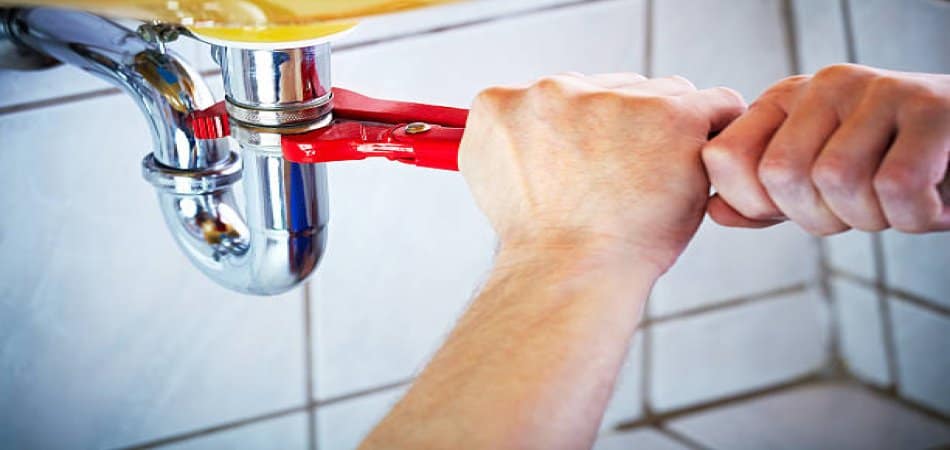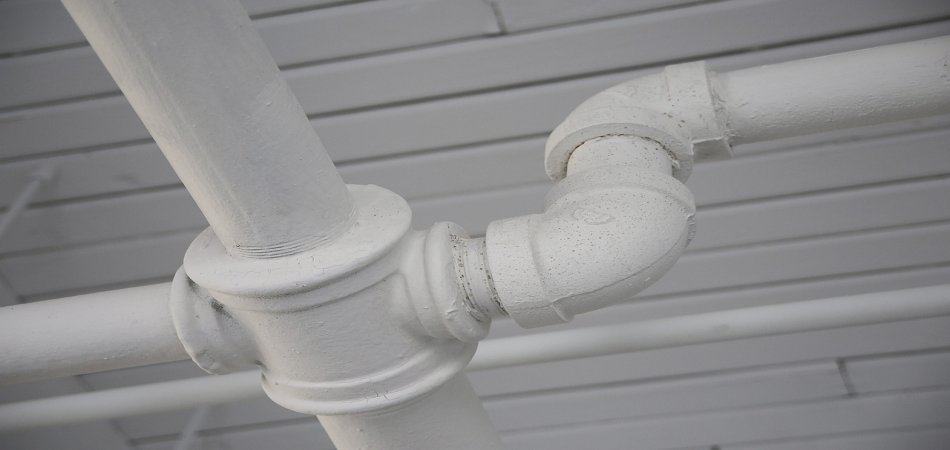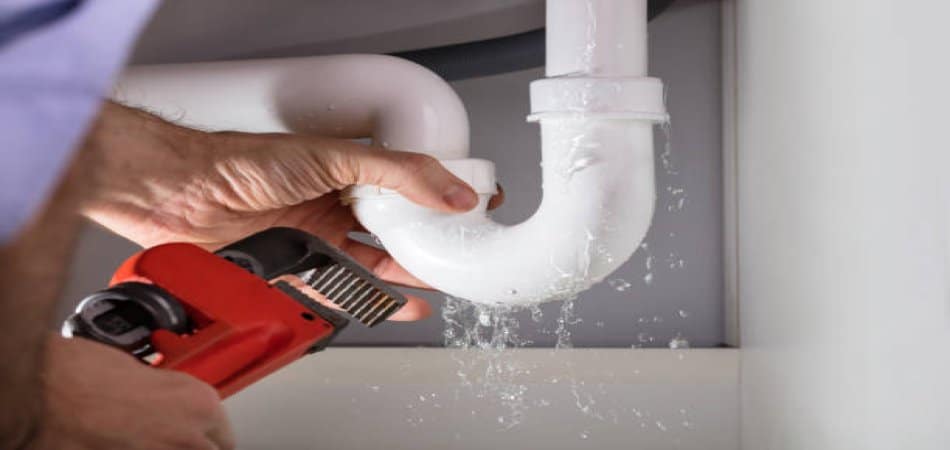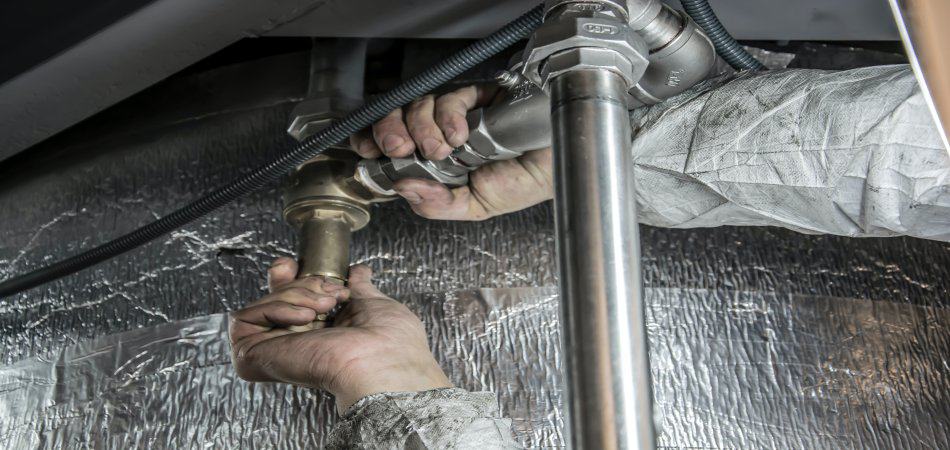Every home or office has a proper piping setup for waste drainage. , you can call it a sewerage system. But you need to install a p-trap with the pipelines for quick and easy dumping. Whether dealing with washroom sinks or kitchen plumbing systems, a p trap is necessary.
Why is a p trap necessary to add to the waste pipelines? What happens if we don’t consider them under the sink? Stay with us if you want to learn the answers to all such questions.
We will discuss them in detail and also provide you with guidelines for solving plumbing problems related to them.
What is the Role of a P Trap in Plumbing?

Most of the plumbing issues will be resolved when you install this trap in your bathroom or kitchen pipelines. How? This trap is installed in the waste piping, which is U-shaped. It builds a connection between the drain of your sink and the home’s sewer system.
Whether you use the sink or not, water remains in this tray to keep the water seal functional. Plus, it blocks dangerous gasses like methane from entering the home. You can also receive your valuables if they fall accidentally into the sink.
In this bend trap, solids remain there for some time before moving towards the main sewerage pipeline. So, by installing a flexible p trap, you get the chance to recover them before they flush out of the home. Now, we will discuss the materials used to prepare these worthy traps.
Materials of P-Trap
These traps are easily available at floor drain manufacturers in various materials like brass, PVC steel, etc. Each type has its own significance. For example, brass ones are famous for their high durability. Plastic ones are great in cost-effectiveness and are easy to install manually. Of course, if your budget is sufficient, we recommend that you choose brass material. Because in the manufacturing industry, brass can be said to be a high-end material. For example, I have a friend who is an enamel pin manufacturer. Their brass enamel pins are the most expensive, but the cuts are also the least.
However, with benefits, you have to face some challenges related to these traps. Let’s check what they are and how we can address them.

Potential Issues with P Trap and Their Solutions
Along with the benefits of a p trap sink, their application has some possible issues. As these traps have bent, solid waste particles accumulate in this shape. With the flow of water, most of the solids are flushed. However, debris, like hair and grease, accumulated over time and tightened the drain pipe.
With time, the passage is completely clogged, and you must conduct a thorough clean-up season to resolve the issue. Another solution to this problem is using traps with a pre-built cleanout tubular drain. Or you can use a shower p trap. Its cleanout technology aids in removing the debris quickly.
Another issue that people find with these traps is venting the gases inside the home with the broken water seal. You can avoid this problem by using the sink often to avoid their dry-up. Don’t leave the sink unused for more than 2 to 3 weeks.
Work Mechanism of P Trap
The P trap’s basic working phenomena is to prevent poisonous gasses from entering your living area. But how? For this purpose, you need to buy a p trap kit. The curve part of this trap has a water sealant that works to release gasses outside without hindering the wastewater flow.
Solid waste particles remain in the trap until new water enters inside the trap. That way, no remnant remains in the trap part of bathroom or kitchen pipelines. Read on to learn the differences between kitchen p trap and sink p trap.

Difference Between Kitchen P-Trap and Sink P-Trap
Some people think that P-traps are the same for the kitchen and bathroom. This is not a fact. Such traps designed to be installed in the kitchen sink are bigger ( 1½ inches) than bathroom ones (around 1¼ inches). They work on the exact mechanisms; the only difference is in their sizes in inches.
The Logic Behind the P Trap Name
This trap is in U shape, but when you connect it with the pipelines, it makes the shape of a “P.” How? It combines two joints at 90 degrees with the help of a horizontal pipe. The sink drain’s exit point is connected to one of these joints.
When will P-Trap Stop Working?
P-traps are also prone to wear out because the solid particles remain in them for some time. Some people face the issue of bad gasses even with installing these traps. This may occur when the water seal is broken with the non-utilization of such utility appliances.
Sometimes, the water seal is broken by the waste solids like hair or fibers. Their presence in the bent part weakens the seal over time. With an ineffective seal, the gasses enter the building, affecting the inner air quality.
S trap vs. P trap
Is there any other version of such waste pipeline traps? Yes, S traps are also used for the same purpose. What is the difference between the two? Let’s see all the P trap vs. S trap factors to make the best choice for your plumbing system.
- The S trap is typically applied to older plumbing setups, while the P trap is associated with modern ones.
- The S Trap is more prone to the issue of gases entering inside with water drying up.
- P Trap is more advanced in releasing the sewer gasses from the horizontal outlet.
Many drain pipe manufacturers provide both these types of traps for waste pipelines. You can get guidelines from experts about the right type of trap according to your plumbing style to get maximum benefits.
Installation Steps of P-Trap

P-traps, including residential and commercial plumbing systems, are easy to install in any setup. During pipe fitting for bathrooms or kitchens, you have to perform the following steps for installing P Trap:
- Use the tailpiece below the sink and slide the shorter end of the trap into it.
- Make the adjustment by moving the trap in an up or down direction. The trap arm must be in alignment with the wall opening.
- Pick the lower part and put the trap arm into the drain fitting spot.
- The trap arm must line up with the U-shaped part of the trap. You can check it by pulling the arm out of the wall fitting.
- If the length is longer, you can cut it short with a hacksaw. For shorter ones, you need to buy a longer piece.
- If the length is appropriate, put the trap arm for installation into the drain and lightly fasten the slip nut.
- When all the parts of the T Trap are connected, fasten the slip nuts tightly to avoid leakage.
Rules Regarding P Trap Usage
For the smooth performance of P-traps, there are some guidelines to follow. Let’s look at them to ensure you face no plumbing issues regarding the p trap kit.
Rule No. 1
Never connect more than 3 sinks with the single trap. This trap is suitable to accommodate all sinks at a time, but overload will hinder its flow. So, keep the limit to 3 maximum number of utility appliances.
Rule No. 2
If a bathroom is under usage occasionally, its p-trap must have a trap primer. What is a trap primer? It is a device that helps maintain the water seal to prevent gasses from entering. It works by providing sufficient water into the trap to keep the water seal functional. So, the p trap works effectively in blocking the gasses even if the sink is not in use for days. Ultimately, we at Plumber Star would like to tell you how to keep your p traps clean to maintain their proper functionality.
Cleaning Options for P Trap
A simple way to keep these traps free from debris is to clean them regularly using an authentic drain cleaner. You have to pour the cleaner into the drain and leave it there for an hour to fight against the grease, hair, or other clogged things. After that, you can use the p-trap sink without any issues.
If you find drain cleaner ineffective, the next option is to use a “snack,” a flexible cable you will pour into the drain. It will move inside the pipeline to remove the obstacles and unclog the pipe. They clear the pipes and remove the grease effectively. You can also move the snake in a circular motion to remove the debris quickly and effectively.
If the problem still exists, and the gasses enter the house, you have to move toward the last resort that unlocks the P-trap. You have to seal all the pipelines before unlocking the trap. By applying pressure, you can manually remove all the waste that clogged the pipe.
Final Words
A P trap is one of the essential plumbing devices to keep your home free from dangerous sewer gasses. The durability and smooth working of these traps depend on the material’s quality and manufacturing. You will face less leakage and blockage problems with premium traps. So, one must go for only authentic suppliers to get the best trap for your sewer pipelines. Plumber Star is the best option if you are looking for a reliable p trap or pipe fitting manufacturer.

